Comcast 2014 Annual Report Download - page 23
Download and view the complete annual report
Please find page 23 of the 2014 Comcast annual report below. You can navigate through the pages in the report by either clicking on the pages listed below, or by using the keyword search tool below to find specific information within the annual report.-
 1
1 -
 2
2 -
 3
3 -
 4
4 -
 5
5 -
 6
6 -
 7
7 -
 8
8 -
 9
9 -
 10
10 -
 11
11 -
 12
12 -
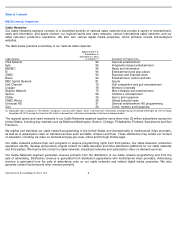 13
13 -
 14
14 -
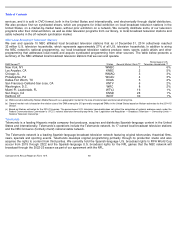 15
15 -
 16
16 -
 17
17 -
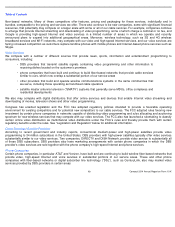 18
18 -
 19
19 -
 20
20 -
 21
21 -
 22
22 -
 23
23 -
 24
24 -
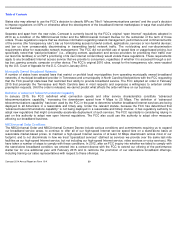 25
25 -
 26
26 -
 27
27 -
 28
28 -
 29
29 -
 30
30 -
 31
31 -
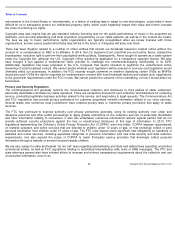 32
32 -
 33
33 -
 34
34 -
 35
35 -
 36
36 -
 37
37 -
 38
38 -
 39
39 -
 40
40 -
 41
41 -
 42
42 -
 43
43 -
 44
44 -
 45
45 -
 46
46 -
 47
47 -
 48
48 -
 49
49 -
 50
50 -
 51
51 -
 52
52 -
 53
53 -
 54
54 -
 55
55 -
 56
56 -
 57
57 -
 58
58 -
 59
59 -
 60
60 -
 61
61 -
 62
62 -
 63
63 -
 64
64 -
 65
65 -
 66
66 -
 67
67 -
 68
68 -
 69
69 -
 70
70 -
 71
71 -
 72
72 -
 73
73 -
 74
74 -
 75
75 -
 76
76 -
 77
77 -
 78
78 -
 79
79 -
 80
80 -
 81
81 -
 82
82 -
 83
83 -
 84
84 -
 85
85 -
 86
86 -
 87
87 -
 88
88 -
 89
89 -
 90
90 -
 91
91 -
 92
92 -
 93
93 -
 94
94 -
 95
95 -
 96
96 -
 97
97 -
 98
98 -
 99
99 -
 100
100 -
 101
101 -
 102
102 -
 103
103 -
 104
104 -
 105
105 -
 106
106 -
 107
107 -
 108
108 -
 109
109 -
 110
110 -
 111
111 -
 112
112 -
 113
113 -
 114
114 -
 115
115 -
 116
116 -
 117
117 -
 118
118 -
 119
119 -
 120
120 -
 121
121 -
 122
122 -
 123
123 -
 124
124 -
 125
125 -
 126
126 -
 127
127 -
 128
128 -
 129
129 -
 130
130 -
 131
131 -
 132
132 -
 133
133 -
 134
134 -
 135
135 -
 136
136 -
 137
137 -
 138
138 -
 139
139 -
 140
140 -
 141
141 -
 142
142 -
 143
143 -
 144
144 -
 145
145 -
 146
146 -
 147
147 -
 148
148 -
 149
149 -
 150
150 -
 151
151 -
 152
152 -
 153
153 -
 154
154 -
 155
155 -
 156
156 -
 157
157 -
 158
158 -
 159
159 -
 160
160 -
 161
161 -
 162
162 -
 163
163 -
 164
164 -
 165
165 -
 166
166 -
 167
167 -
 168
168 -
 169
169 -
 170
170 -
 171
171 -
 172
172 -
 173
173 -
 174
174 -
 175
175 -
 176
176 -
 177
177 -
 178
178 -
 179
179 -
 180
180 -
 181
181 -
 182
182 -
 183
183 -
 184
184 -
 185
185 -
 186
186 -
 187
187 -
 188
188 -
 189
189 -
 190
190 -
 191
191 -
 192
192 -
 193
193 -
 194
194 -
 195
195 -
 196
196 -
 197
197 -
 198
198 -
 199
199 -
 200
200 -
 201
201 -
 202
202 -
 203
203 -
 204
204 -
 205
205 -
 206
206 -
 207
207 -
 208
208 -
 209
209 -
 210
210 -
 211
211 -
 212
212 -
 213
213 -
 214
214 -
 215
215 -
 216
216 -
 217
217 -
 218
218 -
 219
219 -
 220
220 -
 221
221 -
 222
222 -
 223
223 -
 224
224 -
 225
225 -
 226
226 -
 227
227 -
 228
228 -
 229
229 -
 230
230 -
 231
231 -
 232
232 -
 233
233 -
 234
234 -
 235
235 -
 236
236 -
 237
237 -
 238
238 -
 239
239 -
 240
240 -
 241
241 -
 242
242 -
 243
243 -
 244
244 -
 245
245 -
 246
246 -
 247
247 -
 248
248 -
 249
249 -
 250
250 -
 251
251 -
 252
252 -
 253
253 -
 254
254 -
 255
255 -
 256
256 -
 257
257 -
 258
258 -
 259
259 -
 260
260 -
 261
261 -
 262
262 -
 263
263 -
 264
264 -
 265
265 -
 266
266 -
 267
267 -
 268
268 -
 269
269 -
 270
270 -
 271
271 -
 272
272 -
 273
273 -
 274
274 -
 275
275 -
 276
276 -
 277
277 -
 278
278 -
 279
279 -
 280
280 -
 281
281 -
 282
282 -
 283
283 -
 284
284 -
 285
285 -
 286
286 -
 287
287 -
 288
288 -
 289
289 -
 290
290 -
 291
291 -
 292
292 -
 293
293 -
 294
294 -
 295
295 -
 296
296 -
 297
297 -
 298
298 -
 299
299 -
 300
300 -
 301
301 -
 302
302 -
 303
303 -
 304
304 -
 305
305 -
 306
306 -
 307
307 -
 308
308 -
 309
309 -
 310
310 -
 311
311 -
 312
312 -
 313
313 -
 314
314 -
 315
315 -
 316
316 -
 317
317 -
 318
318 -
 319
319 -
 320
320 -
 321
321 -
 322
322 -
 323
323 -
 324
324 -
 325
325 -
 326
326 -
 327
327 -
 328
328 -
 329
329 -
 330
330 -
 331
331 -
 332
332 -
 333
333 -
 334
334 -
 335
335 -
 336
336 -
 337
337 -
 338
338 -
 339
339 -
 340
340 -
 341
341 -
 342
342 -
 343
343 -
 344
344 -
 345
345 -
 346
346 -
 347
347 -
 348
348 -
 349
349 -
 350
350 -
 351
351 -
 352
352 -
 353
353 -
 354
354 -
 355
355 -
 356
356 -
 357
357 -
 358
358 -
 359
359 -
 360
360 -
 361
361 -
 362
362 -
 363
363 -
 364
364 -
 365
365 -
 366
366 -
 367
367 -
 368
368 -
 369
369 -
 370
370 -
 371
371 -
 372
372 -
 373
373 -
 374
374 -
 375
375 -
 376
376 -
 377
377 -
 378
378 -
 379
379 -
 380
380 -
 381
381 -
 382
382 -
 383
383 -
 384
384 -
 385
385 -
 386
386
 |
 |

Table of Contents
Must-Carry/Retransmission Consent
Cable operators are currently required to carry, without compensation, the programming transmitted by most local commercial and
noncommercial broadcast television stations. As an alternative to must carry, local broadcast television stations may choose to
negotiate with a cable operator for retransmission consent, under which the station gives up its must-
carry rights and instead seeks
to negotiate a carriage agreement with the cable operator. Such agreements frequently involve payments to the station. We
currently pay certain local broadcast television stations in exchange for their required consent for the retransmission of the stations’
broadcast programming to our video services customers and expect to continue to be subject to demands for increased payment
and other concessions from local broadcast television stations. Congress passed legislation in 2014, which, among other things,
directs the FCC to initiate a rulemaking to review aspects of its retransmission consent rules. We cannot predict the outcome of the
rulemaking or how it might affect our future retransmission consent negotiations. For information on must-
carry and retransmission
consent issues relating to our broadcast television business, see “NBCUniversal Segments — Broadcast Television”
below and
refer to the “Must-Carry/Retransmission Consent” discussion within that section.
Pricing and Packaging
The Communications Act and FCC regulations limit the prices that cable operators may charge for basic video service, equipment
and installation. These rules do not apply to cable systems that the FCC determines are subject to effective competition, or where
franchising authorities have chosen not to regulate rates. Approximately 80% of our video services customers are not subject to
rate regulation. From time to time, Congress and the FCC consider imposing new pricing or packaging regulations.
Cable Equipment
The Communications Act includes provisions aimed at promoting the retail sale of set-
top boxes and other equipment that can be
used to receive digital video services, and the FCC has adopted regulations implementing this policy. With the exception of certain
one-way devices, like digital transport adapters, these regulations prohibit cable operators from deploying new set-
top boxes that
perform both channel navigation and security functions. As a result, most set-
top boxes that we purchase must rely on a separate
security device known as a CableCARD. Congress passed legislation in 2014 that repeals this prohibition in December 2015. The
legislation also directs the FCC to establish a working group to report by September 2015 on software-
based security aimed at
promoting the retail availability of video devices. It is uncertain what, if any, steps the FCC will take in response to that report.
Pole Attachments
The Communications Act permits the FCC to regulate the rates, terms and conditions that pole-
owning utility companies (with the
exception of municipal utilities and rural cooperatives) charge cable systems and telecommunications carriers for allowing
attachments to their poles. States are permitted to preempt FCC jurisdiction and regulate the rates, terms and conditions of
attachments themselves, and many states in which we operate have done so. Most of these states have generally followed the
FCC’
s pole attachment rate standards. Until recently, the pole attachment rates applicable to telecommunications services were
significantly higher than the rates we have paid for cable and other services. In 2013, a federal court upheld changes to the FCC’
s
pole rate formula that reduce the rates for telecommunications service pole attachments to levels that are at or near the rates for
cable attachments. However, utility companies are able to rebut certain presumptions in the new FCC formula so as to justify higher
rates, and it is expected that most will attempt to do so.
Franchising
Cable operators generally operate their cable systems under nonexclusive franchises granted by local or state franchising
authorities. While the terms and conditions of franchises vary materially from jurisdiction to juris-
Comcast 2014 Annual Report on Form 10
-
K
18
